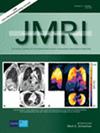Preoperative Differentiation of HER2-Zero and HER2-Low from HER2-Positive Invasive Ductal Breast Cancers Using BI-RADS MRI Features and Machine Learning Modeling
Abstract
Background
Accurate determination of human epidermal growth factor receptor 2 (HER2) is important for choosing optimal HER2 targeting treatment strategies. HER2-low is currently considered HER2-negative, but patients may be eligible to receive new anti-HER2 drug conjugates.
Purpose
To use breast MRI BI-RADS features for classifying three HER2 levels, first to distinguish HER2-zero from HER2-low/positive (Task-1), and then to distinguish HER2-low from HER2-positive (Task-2).
Study Type
Retrospective.
Population
621 invasive ductal cancer, 245 HER2-zero, 191 HER2-low, and 185 HER2-positive. For Task-1, 488 cases for training and 133 for testing. For Task-2, 294 cases for training and 82 for testing.
Field Strength/Sequence
3.0 T; 3D T1-weighted DCE, short time inversion recovery T2, and single-shot EPI DWI.
Assessment
Pathological information and BI-RADS features were compared. Random Forest was used to select MRI features, and then four machine learning (ML) algorithms: decision tree (DT), support vector machine (SVM), k-nearest neighbors (k-NN), and artificial neural nets (ANN), were applied to build models.
Statistical Tests
Chi-square test, one-way analysis of variance, and Kruskal–Wallis test were performed. The P values <0.05 were considered statistically significant. For ML models, the generated probability was used to construct the ROC curves.
Results
Peritumoral edema, the presence of multiple lesions and non-mass enhancement (NME) showed significant differences. For distinguishing HER2-zero from non-zero (low + positive), multiple lesions, edema, margin, and tumor size were selected, and the k-NN model achieved the highest AUC of 0.86 in the training set and 0.79 in the testing set. For differentiating HER2-low from HER2-positive, multiple lesions, edema, and margin were selected, and the DT model achieved the highest AUC of 0.79 in the training set and 0.69 in the testing set.
Data Conclusion
BI-RADS features read by radiologists from preoperative MRI can be analyzed using more sophisticated feature selection and ML algorithms to build models for the classification of HER2 status and identify HER2-low.
Level of Evidence
4.
Technical Efficacy
Stage 2.

 求助内容:
求助内容: 应助结果提醒方式:
应助结果提醒方式:


